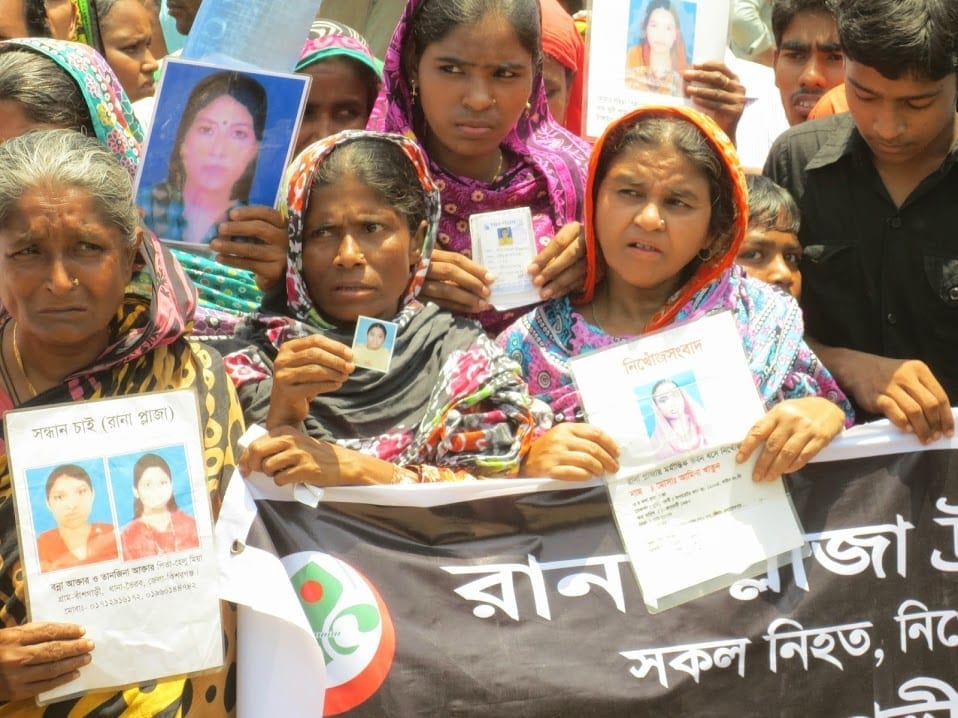
Apr 24, 2014
One year ago today, as the walls of the multistory Rana Plaza building collapsed around her, Moriom Begum was trapped, injured and unable to move in the dark, surrounded by the lifeless bodies of her co-workers.
A sewing operator at New Wave Style, one of five garment factories in Rana Plaza, Morium sat pinned beneath furniture for two days before she was rescued. More than 1,100 garment workers, mostly young women, were killed when the building pancaked around them. At least 2,500 garment workers were injured. Most, like Moriom, sustained such serious and life-altering injuries that they cannot work and may never again be able to do so, throwing their survival—and the survival of their families—into question.
Since the Rana Plaza disaster, 54 people have died or been injured at garment factories in Bangladesh, according to data compiled by Solidarity Center staff in Dhaka, the Bangladesh capital. The Rana Plaza tragedy closely followed the deadly Tazreen factory blaze, which killed 112 garment workers in November 2012. Survivors and the families of workers killed in both disasters have received little, if any, compensation, and many are struggling to survive.
Although labor organizations and prominent retailers created a $40 million compensation fund last December to aid the families of workers killed and injured at Rana Plaza, less than $20 million has been donated.
The government has taken several positive steps since the Rana Plaza tragedy, including accepting union registrations. To date, more than 100 have filed for official recognition. Yet when workers try to exercise their rights for safer workplaces, they are often harassed and threatened.
Garment workers seeking to form unions are intimidated by factory managers, who sometimes threaten to kill them, according to a recent Human Rights Watch report. Union organizers like Hasina, have been attacked, beaten, and in some cases, left for dead, when they spoke with garment workers about forming a union. If garment workers do succeed in registering their union, factory managers often prevent the workers from negotiating contracts for safer working conditions and living wages.
Garment workers and other workers in Bangladesh’s export-processing zones are subject to a different, much weaker set of labor laws than workers in the rest of the country, even though the $20 billion garment industry is Bangladesh’s biggest earner of foreign exchange.
The safety and lives of Bangladesh’s workers will not improve until they can exercise their rights, organize freely, be fairly compensated and ensure that their workplace is not a death trap. Reforming labor laws so they meet international standards for freedom of association and collective bargaining rights is part of the solution, says A. K. M. Nasim, senior legal counselor at the Solidarity Center’s office in Dhaka.
Employers and the government also must protect and respect the right of workers to form and join independent unions. Workers must not be intimidated, harassed, verbally or physically assaulted or fired from their jobs when seeking to form a union or represent their own interests, including the right to refuse to enter or remain in a dangerous workplace.
Moriom, who lost her right hand and suffers from constant pain, said the government and employers should understand the value of other people’s life.
If they value life, she said, they will ensure that no more garment workers are injured or killed.
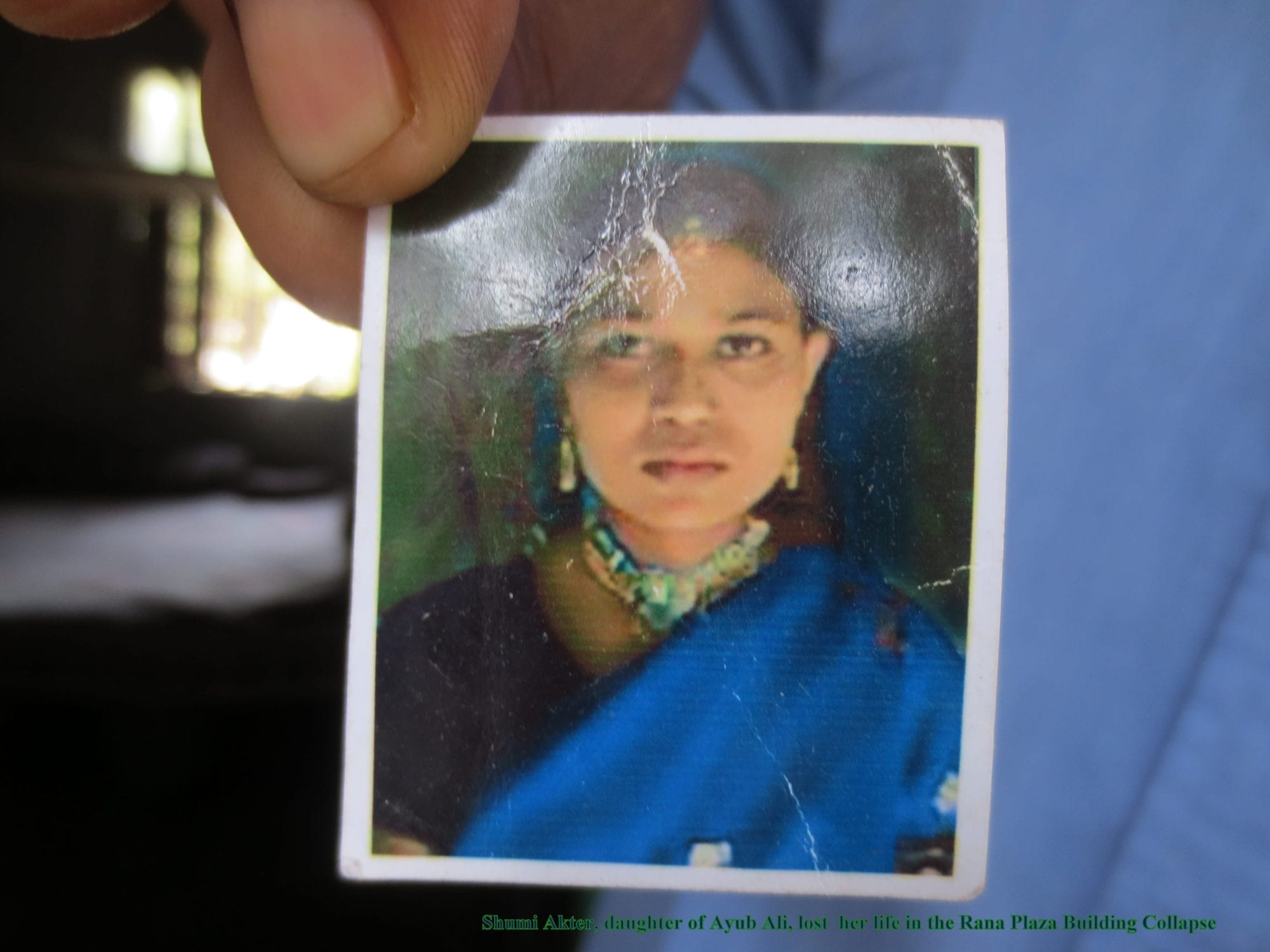
Apr 23, 2014
Shumi Akter was not quite 12 years old when she first started working at a garment factory in Bangladesh. By age 18, she had worked as a sewing machine operator at the New Bottom Style garment factory for more than two years, where the $75 a month she was paid helped support her husband and parents, with whom she lived.
On April 24, 2013, Shumi was among the more than 1,100 garment workers who perished in the collapse of the multistory Rana Plaza, which housed five garment factories, including New Bottom Style. Before leaving for work the morning she died, she gave her father more than half a month’s wages so he could pay a debt he owned.
“Now, I cannot find the happiness of life,” says Shumi’s father, Ayub Ali, a rickshaw driver who described his daughter as extremely affectionate.
Shumi’s mother, Amena Begum, still cries at night for her daughter and since the tragedy, has been unable to work at the garment factory where she was employed. Shumi’s body, found 11 days after the collapse, was recognizable only from her identification card and dress.
When Shumi’s parents went to collect their daughter’s body, government officials gave them $244 in compensation. Later, they also received $1,223 from the prime minister’s office and some $300 from private agencies.
Ayub Ali, who makes $3 a day, said “when one of the family member’s income discontinues, then the need is obvious.” Shumi had no children, but two younger siblings remain at home.
“I know very well that even lots of compensation can’t give my daughter back,” Ayub Ali said. “But the compensation can bring little bit of relief towards my family.”
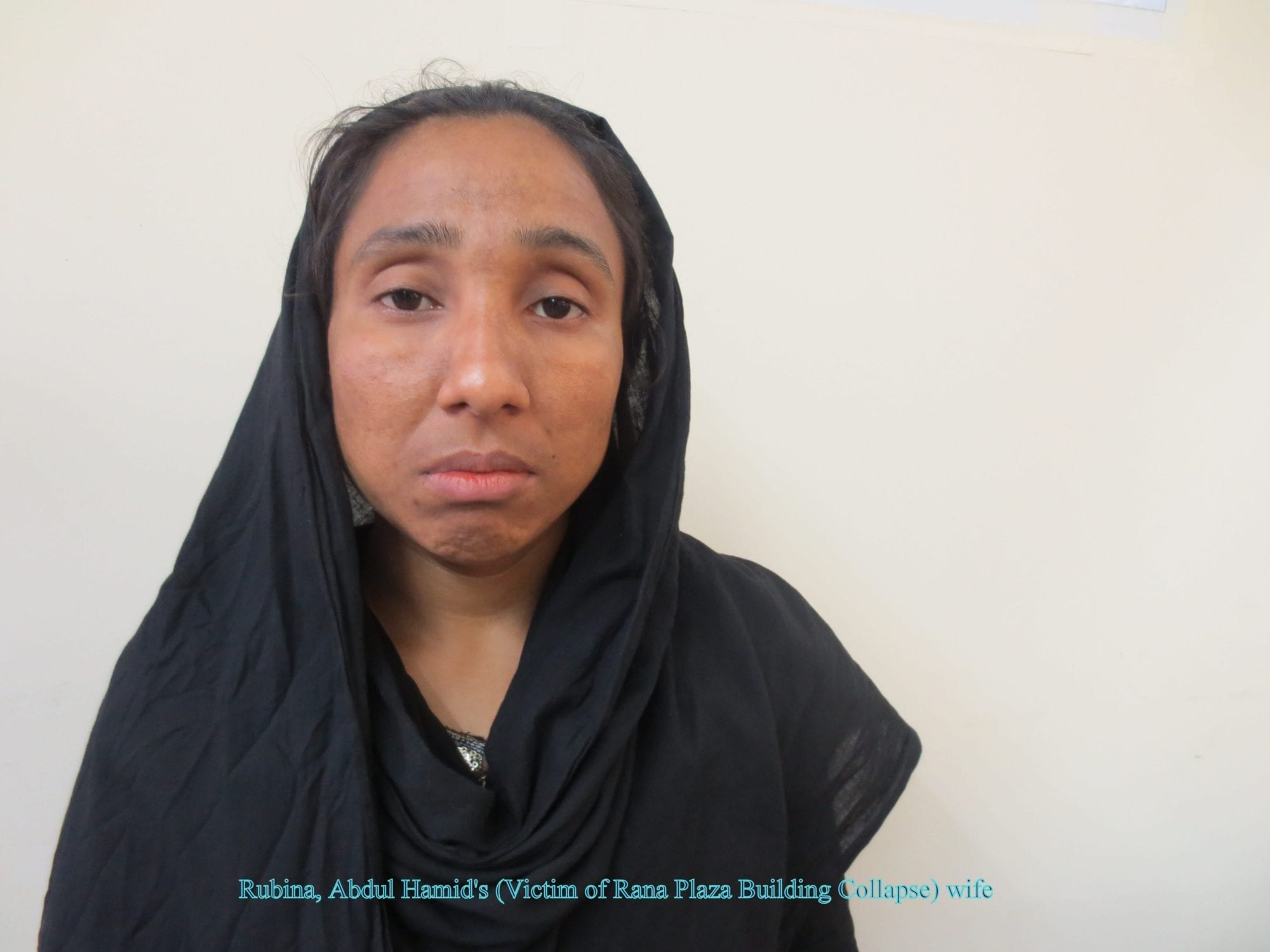
Apr 22, 2014
Rubina and her husband, Abdul Hamid, made enough to support themselves and their two children after they moved five years ago from a village to Dhaka, the Bangladesh capital. Both were employed as garment workers. But their efforts to ensure an even better future for their children ended April 24, 2013.
That day, the multistory Rana Plaza building collapsed, killing more than 1,100 workers, including Abdul Hamid. When Rubina left the factory where she worked to look for her husband in the hours after the disaster, her employer fired her.

Abdul Hamid was killed in the Rana Plaza building collapse. Photo Courtesy Rubina
“I want nobody to become helpless like me,” Rubina said, tears in her eyes. “Me and my husband thought if both of us work hard, we may bring a better future for our children.”
“We once had money. I could feed my children well. They didn’t have to face difficulties. But now I can’t feed them properly, can’t buy clothes for them.” Abdul Hamid, who worked as a cutting master at New Wave Style, one of five garment factories in Rana Plaza, was paid $110 to $122 per month with overtime.
Without a job in a garment factory, Rubina is making $24 a month by cleaning five houses. Her monthly rent, $18, takes up most of her earnings, and she is three months behind in payments. She also must pay for school admission and exam fees.
3, fear that if Rubina returns to work in a garment factory, she, too, will be killed. “They say, ‘Father died, if you go, you will die too. Please don’t go.’ ”
Rubina received $1,223 in compensation from the government—roughly 10 months of her husband’s salary—and another $183 from private organizations, but she will be forced to return to her village if she does not receive sufficient compensation so she can pay her rent and feed her daughters.
The day before Rana Plaza collapsed, engineers identified cracks so serious they said the building should be closed immediately. But many factory managers threatened workers they would be fired if they did not show up for work.
Rubina waited eleven days before some of her husband’s remains were found. She identified him by the pants he wore.
“Hundreds of people lost their lives,” she said. “They (the factory owners) shouldn’t take people’s lives.” She thinks management should get more safety training and the government should inspect the factories to ensure they are safe.
“If (the factory owners) don’t give me compensation, I can do nothing,” Rubina said. The owners, she said, have a responsibility. “My husband died. But his life was valuable.”
Apr 21, 2014
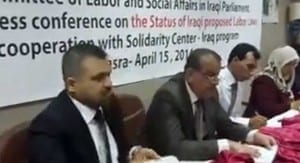
Labor Committee Vice President Salih Al Asady (second from left) speaks at a press conference held by Iraqi unions
Iraqi trade union leaders and members are keeping the spotlight on Parliament, urging lawmakers to pass a trade union law that has been pending since January.
Some 82 unions members and leaders from all Iraqi trade unions, with support from the Solidarity Center, held a press conference in Basra April 15, their latest effort to secure passage of the law. If passed, it would provide first-ever worker rights protections in line with core labor standards, including freedom of association.
In a demonstration of solidarity, the Kurdistan United Workers Union (KUWU) sent two delegates to the event, which also included the head of Parliament’s labor committee.
Union representatives also raised concerns over the scope of the law, which does not cover public-sector workers. Labor Committee Vice President Salih Al Asady, who took part in the event, said he would bring the issue to Parliament. He also urged the Iraqi union leaders and members to continue to show their strength through rallies and other campaign actions to push lawmakers to vote on the law before this session ends. Elections are scheduled April 30, and the current Parliament will remain in session until June 15.
Parliament has voted on 46 of 157 articles, however the remainder have been unable to be voted on due to an insufficient number of members of Parliament showing up to each session, though the law continues to appear each day on the agenda. This is the result of political conflicts, in particular around the inability of the parliament to pass the budget law.
Six major Iraqi labor unions, together with the Solidarity Center, have worked since June 2012 to bring proposed changes to the nation’s draft labor law in line with International Labor Organization (ILO) conventions. Workers are still subject to labor laws from the Saddam Hussein era.
Watch a video of the event (in Arabic).
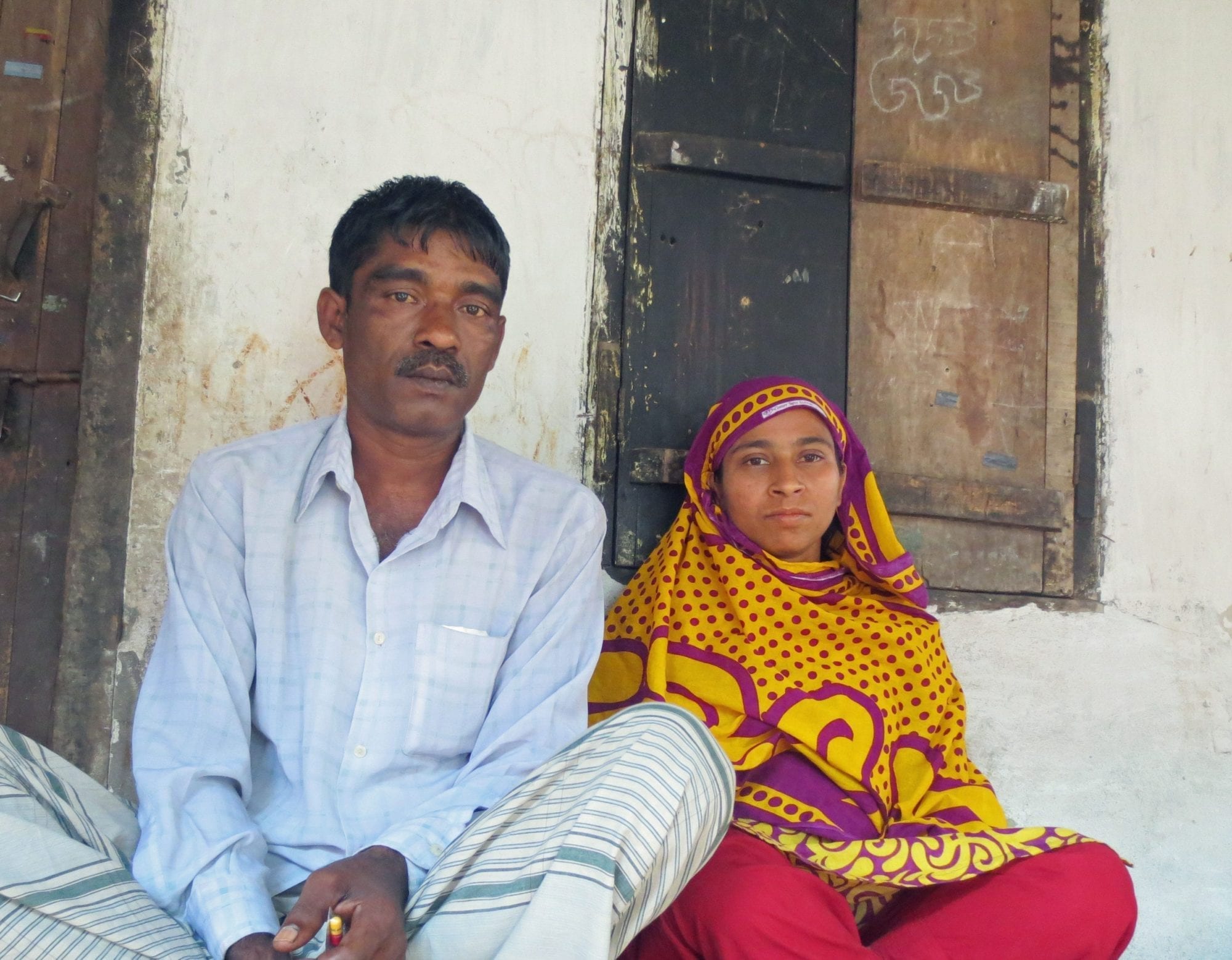
Apr 21, 2014
Most of the garment workers who survived the April 24, 2013, collapse of Rana Plaza in Bangladesh say they have been so physically injured and emotionally traumatized, they are unable to ever again work in a garment factory.
“Everybody is scared (to work) now (after the collapse),” said Hamida Begum, 28, who survived the disaster but suffers from constant pain in her right leg and eye. Yet garment factory work offers a rare option for millions of Bangladeshis to earn a living, and now Hamida is unable to contribute the wages needed to support herself and her family. “I am not educated and I cannot manage a good job,” she said.
Hamida, who was employed as a helper in New Wave Style, one of five garment factories in the Rana Plaza building, moved a few years ago to Dhaka, the capital, in search of a job. With overtime, she was paid between $60 and $70 a month. A year after the disaster, she still has received almost no compensation for her injuries.
“When the prime minister came to visit the victims in the hospital, I received $122 and a sari,” Hamida said. She received another $400 dollars from private donations.
Hamida’s husband earns between $1 and $2 a day, and the couple live with Hamida’s sister. They are unable to provide for their four-year-old daughter, who lives in a village with relatives.
She must take pain killers to endure the pain from her injuries. During the collapse, her head was injured and a gas cylinder fell on her right leg. More than 1,100 workers were killed and thousands more injured. Some bodies have never been found.
Hamida and her co-workers did not want to go into the Rana Plaza building on April 24. But they were told to report to work, despite the findings of an engineer the day before that no one should be in the building because it was structurally unsound. Hamida said as soon as the building generator was switched on, the building collapsed. She remembers one co-worker falling on her as she fell on two others. Then she lost consciousness.
The government should fulfill its responsibility to ensure that garment workers are not injured or killed at work, Hamida said. And if she ever met the factory owner, she would ask for sufficient compensation to support her family.
“If the owners are morally conscientious, then they should make an arrangement for us so that we can live a normal life.”






